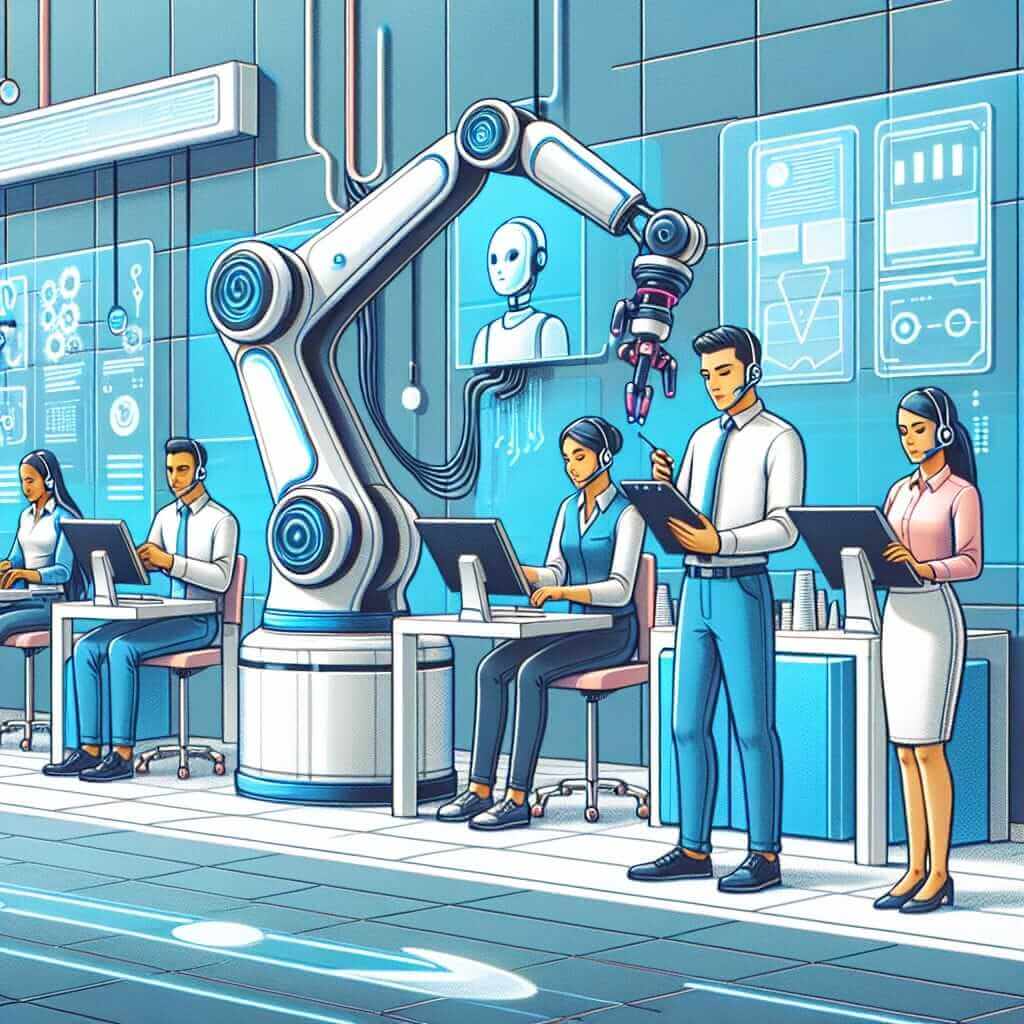The IELTS Reading section is designed to test a candidate’s ability to read and understand texts taken from books, magazines, and newspapers. One of the commonly discussed themes in recent tests is the economic impacts of automation on service industries. As global industries continue to evolve with technological advancements, understanding how automation affects various economic sectors has become increasingly relevant.
Historically, this topic has frequently appeared in IELTS exams due to its current global relevance. Given the rapid changes in technology, there is a high likelihood that similar topics will appear in future IELTS exams.
Economic Impacts of Automation on Service Industries
Reading Passage
The following passage is an example text that fits a Medium Text level, providing practice for those aiming to improve their IELTS Reading skills:
The Dawn of Automation in Service Industries
Automation in service industries has surged profoundly over the last decade, transforming the way businesses operate and deliver value. From automated customer service representatives to self-checkout counters in retail, automation has not only streamlined operations but also significantly impacted the economic landscape.
The primary economic impact of automation in service industries is the reduction in labor costs. By replacing human workers with machines, businesses can lower their operational expenses, leading to higher profit margins. For instance, automated customer service chatbots can handle multiple customer queries simultaneously, reducing the need for large customer service teams.
However, these benefits come with notable drawbacks. The displacement of human workers leads to rising unemployment rates, especially in sectors heavily reliant on low-skill jobs. This situation exacerbates economic inequalities, as those without the skills to operate or manage automated systems find themselves out of work.
Moreover, the shift towards automation necessitates significant upfront investments. Small and medium-sized enterprises (SMEs), which may lack the financial resources of larger corporations, often struggle to implement these technologies. This disparity creates an uneven playing field, further consolidating market power among big businesses.
While automation drives efficiency and growth in some sectors, it disrupts traditional employment patterns and presents challenges for the workforce. Policymakers must therefore consider strategies to mitigate negative effects, such as retraining programs to help displaced workers acquire new skills.

Questions
Multiple Choice
-
What is the primary economic benefit of automation in service industries?
A. Increased sales
B. Reduction in labor costs
C. Improved customer satisfaction
D. Enhanced product quality -
Why do SMEs struggle with implementing automation?
A. Lack of technological resources
B. Absence of skilled workforce
C. Higher operational costs
D. Significant upfront investments
True/False/Not Given
- Automation in service industries has reduced operational costs in large corporations.
- Automation technologies are easily affordable for small businesses.
- Retraining programs can help workers become skilled in operating automated systems.
Answer Key
- B. Reduction in labor costs
- D. Significant upfront investments
- True
- False
- True
Common Mistakes and Tips
- Misunderstanding Key Points: Ensure you understand the main ideas and do not misinterpret contextual details.
- Time Management: Allocate time to skim through passages and questions to complete within the time limit.
- Practice Different Question Types: Familiarize yourself with multiple question formats to build overall competency.
Vocabulary
Key terms in the passage:
- Streamlined (adj): /ˈstriːmlaɪnd/ – made more efficient or effective by removing unnecessary elements.
- Displacement (n): /dɪsˈpleɪsmənt/ – the removal of something from its usual place or role.
- Upfront (adj): /ʌpˈfrʌnt/ – paid or due in advance of when it is needed or expected.
- Exacerbate (v): /ɪɡˈzæsərbeɪt/ – to make a problem, bad situation, or negative feeling worse.
- Mitigate (v): /ˈmɪtɪɡeɪt/ – to make something less severe, serious, or painful.
Grammar
Focus on Complex Sentences
- Structure: A complex sentence contains one independent clause and at least one dependent clause.
- Example from text: “While automation drives efficiency and growth in some sectors, it disrupts traditional employment patterns and presents challenges for the workforce.”
- Usage: Complex sentences will improve the quality of your writing and showcase your language skills.
Advice for IELTS Reading Preparation
- Consistent Practice: Regularly practice reading academic texts and articles on contemporary topics.
- Skimming and Scanning: Develop skills to quickly identify key points without reading every word.
- Mock Tests: Take practice tests under timed conditions to build familiarity.
- Review Vocabulary: Expand your vocabulary and understand the context in which words are used.
By integrating these strategies and resources into your preparation, you can improve your performance in the IELTS Reading section and be better equipped to tackle topics such as the economic impacts of automation on service industries.